TBS_ AKASAKA BLITZ Monument/Gallery designed by CIC, NOMURA Co., Ltd
Reviving AKASAKA BLITZ with a monument and gallery connecting TBS, its viewers, the past, and the present
In this project, a monument to attract visitors and a gallery allowing them to experience the 70-history of TOKYO BROADCASTING SYSTEM TELEVISION, INC. (TBS), from its start to the present day, were designed and constructed for the interior of the AKASAKA BLITZ Studio building, which is owned by TBS.
The ratio of TV viewers and radio listeners in Japan is said to be higher than in other countries. Since its start as a TV/radio broadcasting station, TBS has been providing people with entertaining content for 70 years.
However, due to COVID-19, the Akasaka district, home to TBS headquarters, is losing its liveliness.
Based on TBS’s desire to “revive Akasaka, which has lost pedestrian traffic due to COVID-19, into a hustling and bustling place once more!” and to “have people get to know and appreciate TBS even more!” we created a monument designed to draw people into the building and serve as the face of the “New AKASAKA BLITZ.”
The monument was designed so that when you climbed up the grand staircase from the underground Akasaka Station to the ground-level glass-walled AKASAKA BLITZ building, it would stand impressively as a focal point.
The audio/visual/broadcasting equipment comprising the monument was painted white to make the content noticeable, in line with TBS’s desire to convey the message, “we have created content, not hardware.”
The structure was built with trusses/scaffolding commonly used at TV production sites.
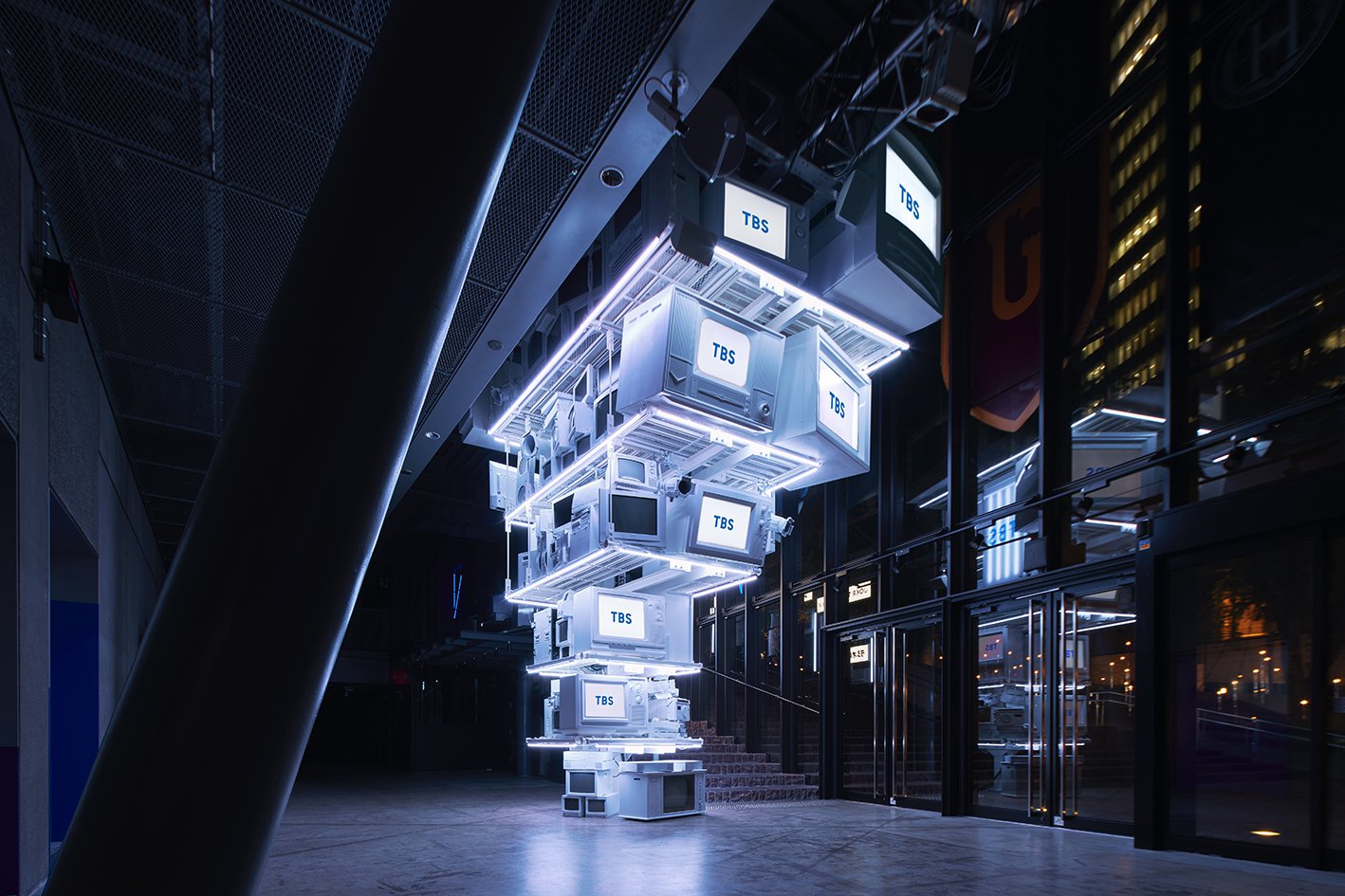
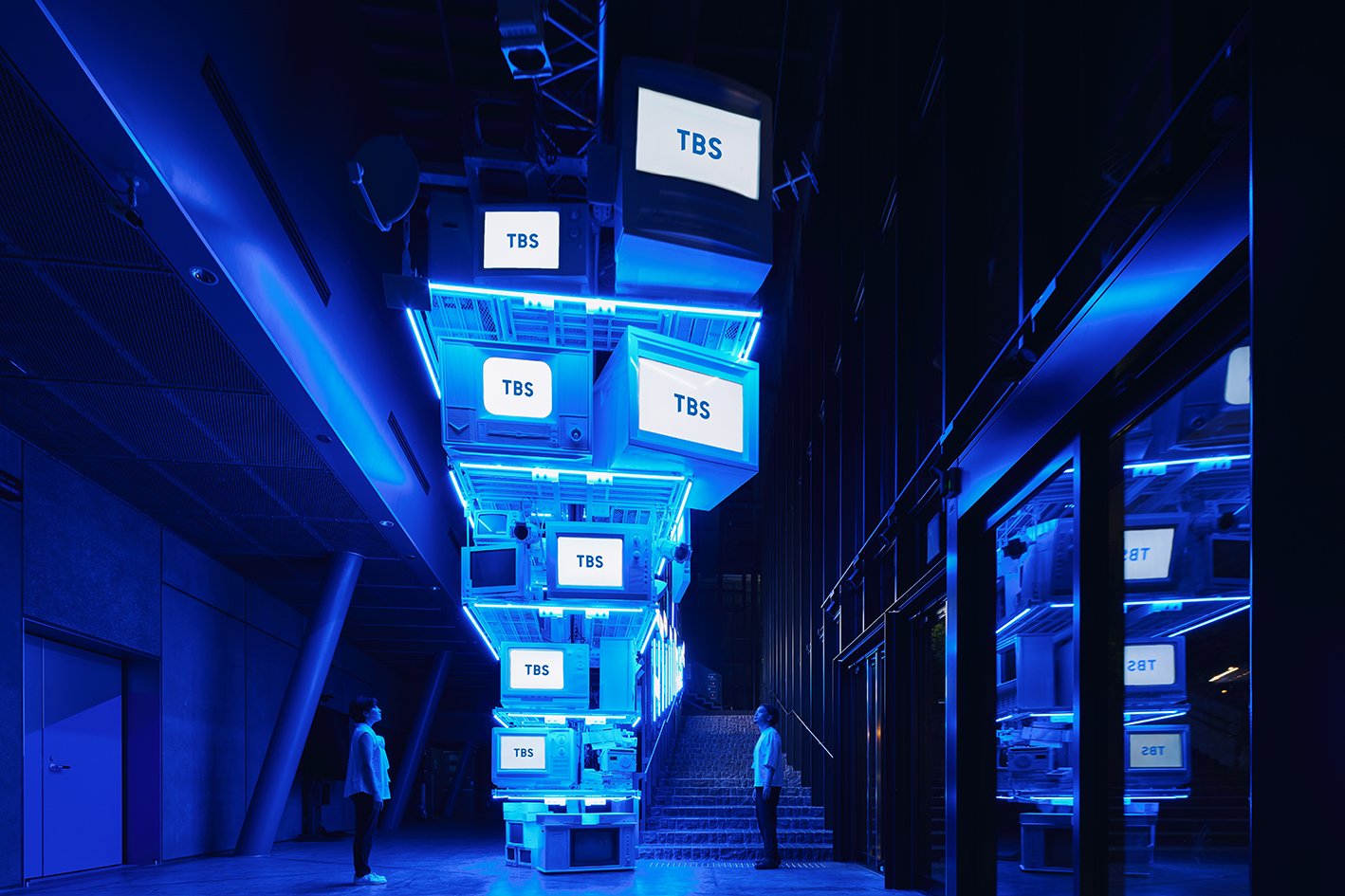
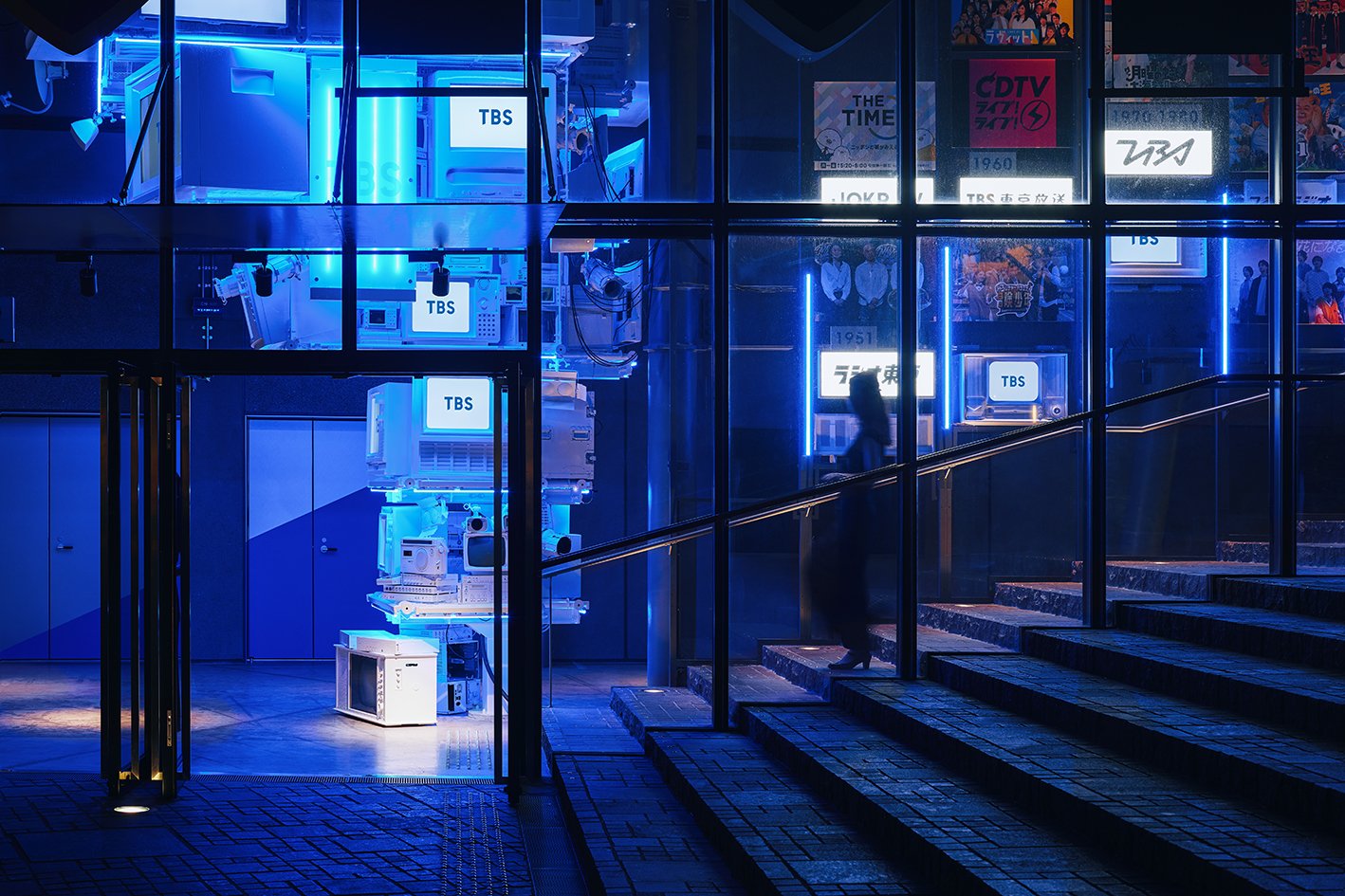
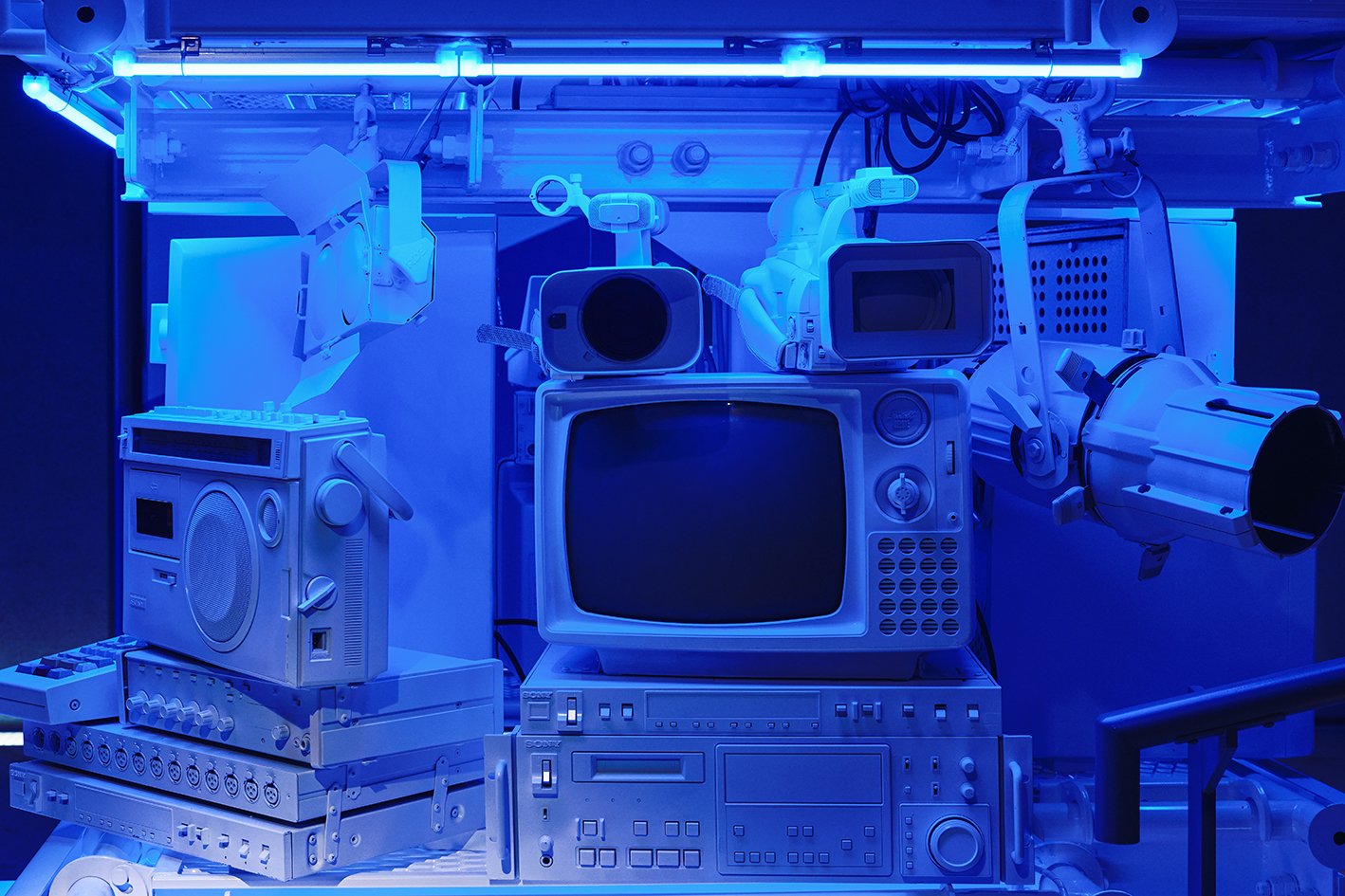
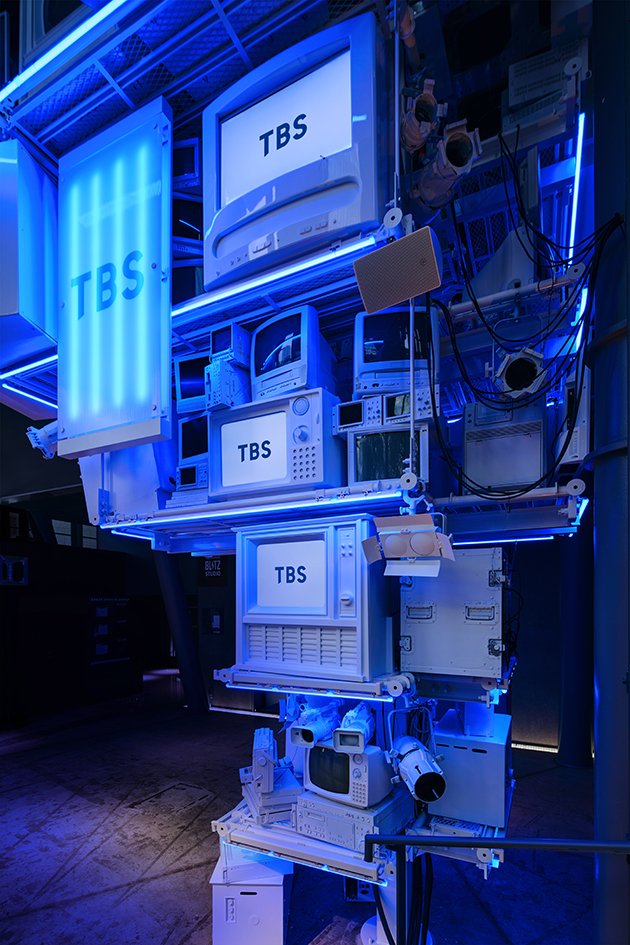
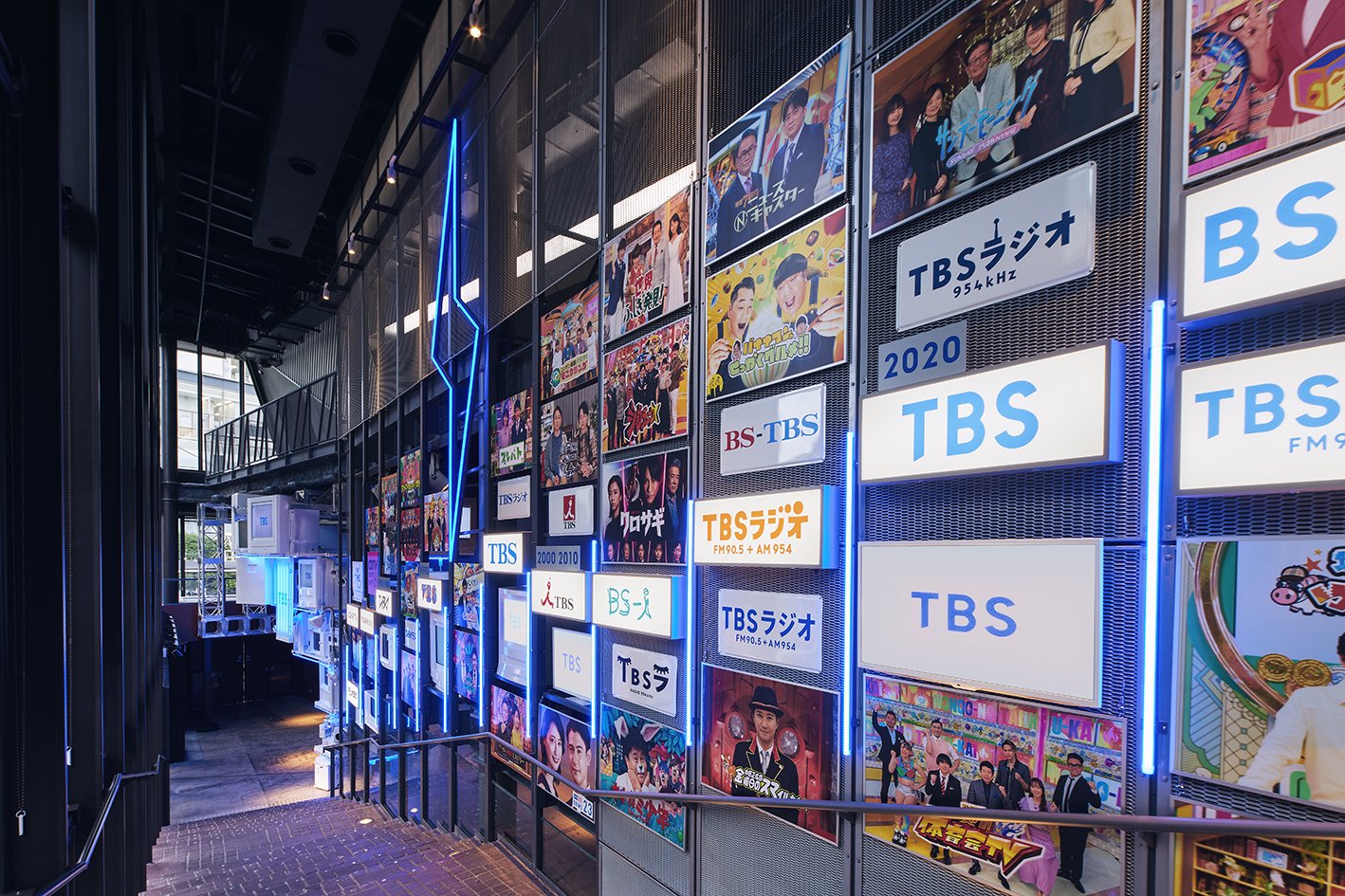
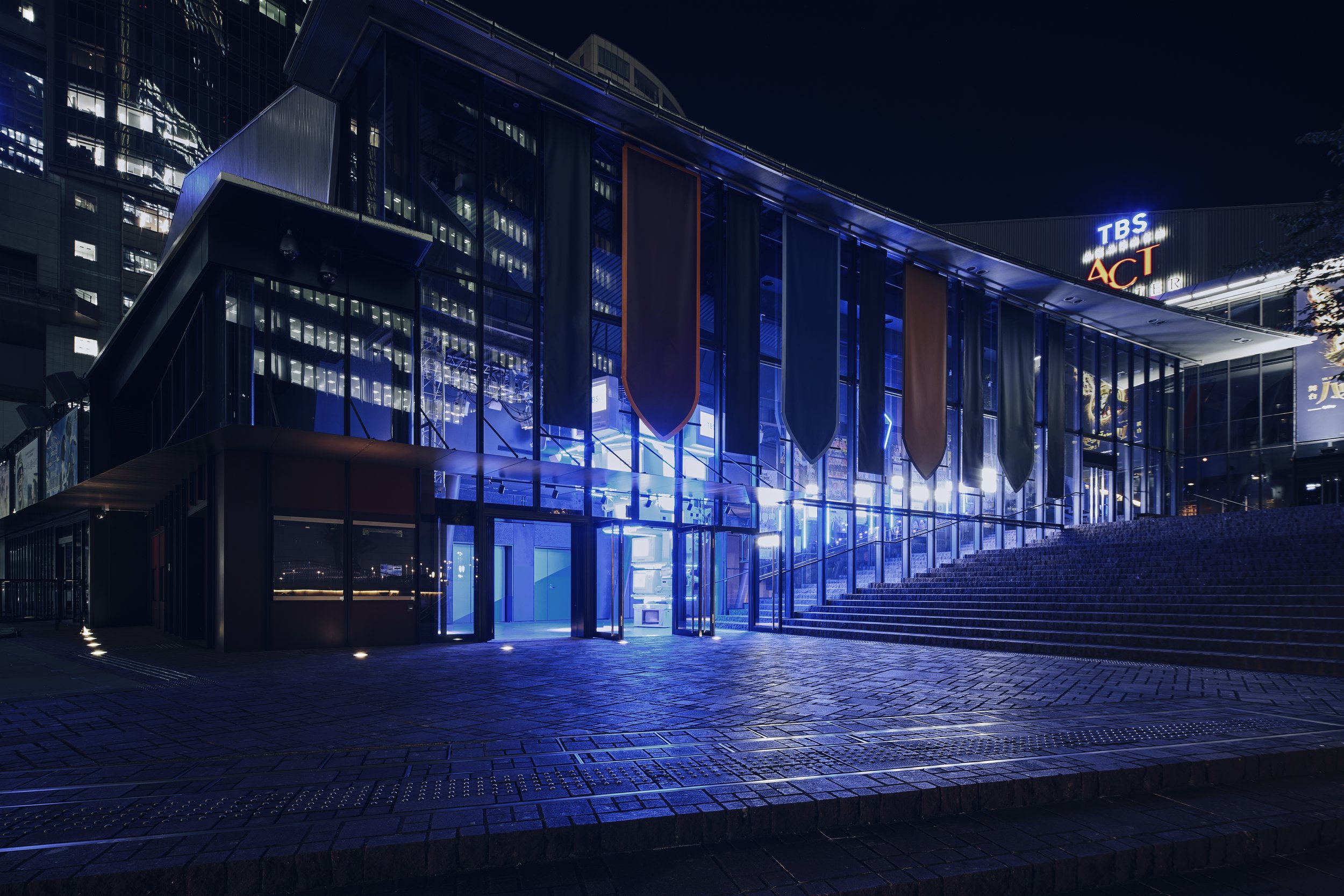
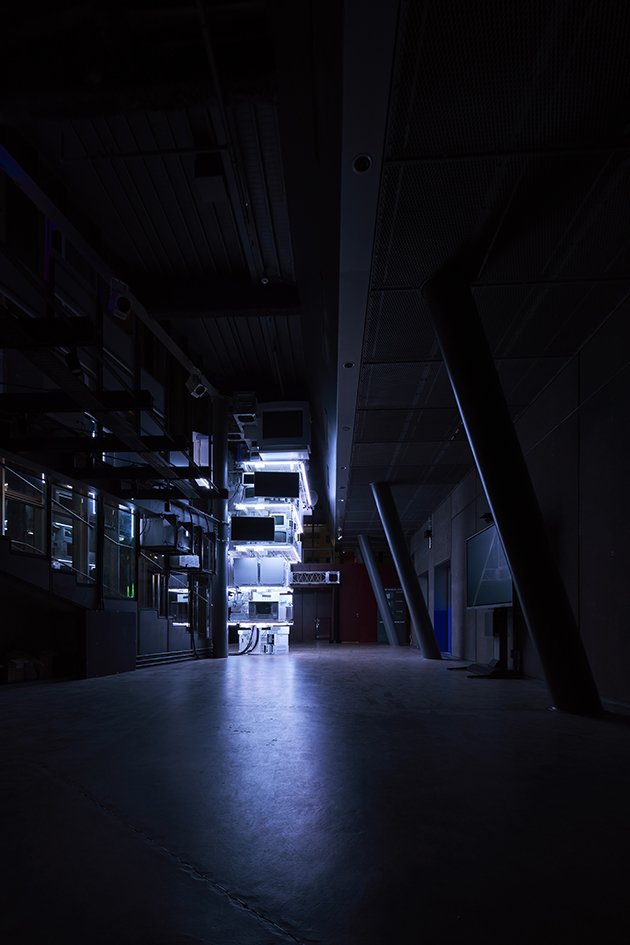
The equipment comprising the monument extends grandly upward toward the sky in an arrangement that attracts, envelopes, and entertains people.
The staircase wall leading up from the monument serves as a gallery displaying the 70-year history of TBS, following the broadcaster’s viewing media transition from its opening to the present day. The gallery content is displayed continuously so as not to lose association with the monument. The staircase leads to a studio viewing area where visitors can observe real-time television production, thus creating a spatial construct that allows people to experience the connection between TBS’s past and present.
Additionally, from an SDGs perspective, 1.4 tons of “audio/visual equipment such as TVs and radios and broadcasting equipment and materials used in content production that were scheduled to be discarded” were creatively reused for the monument’s construction. By repurposing this material for use in the symbolic monument and an exhibit highlighting 70 years of TBS history, new value and relationships between people and things were created, while serving as an important initiative for thinking about a future recycling-orientated society that considers the global environment.
This project has realized the following SDGs: 11 Sustainable Cities and Communities, and 12 Responsible Consumption and Production.
Thus, all the audio-visual/broadcasting equipment that had connected people and TBS, and was scheduled to be discarded, has been repurposed and taken on a new form in connecting the broadcaster, communities, and people.
Designer Profile


